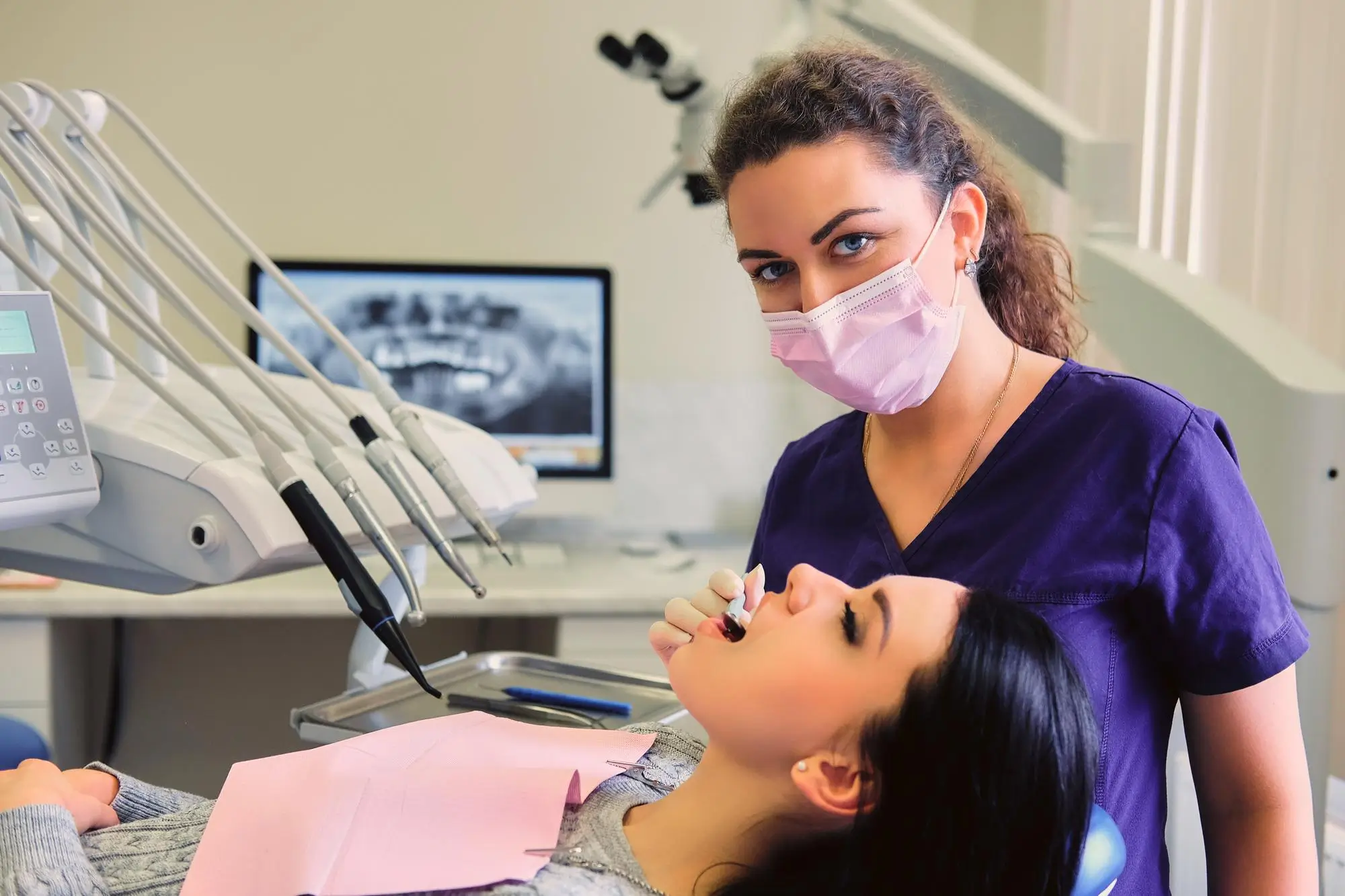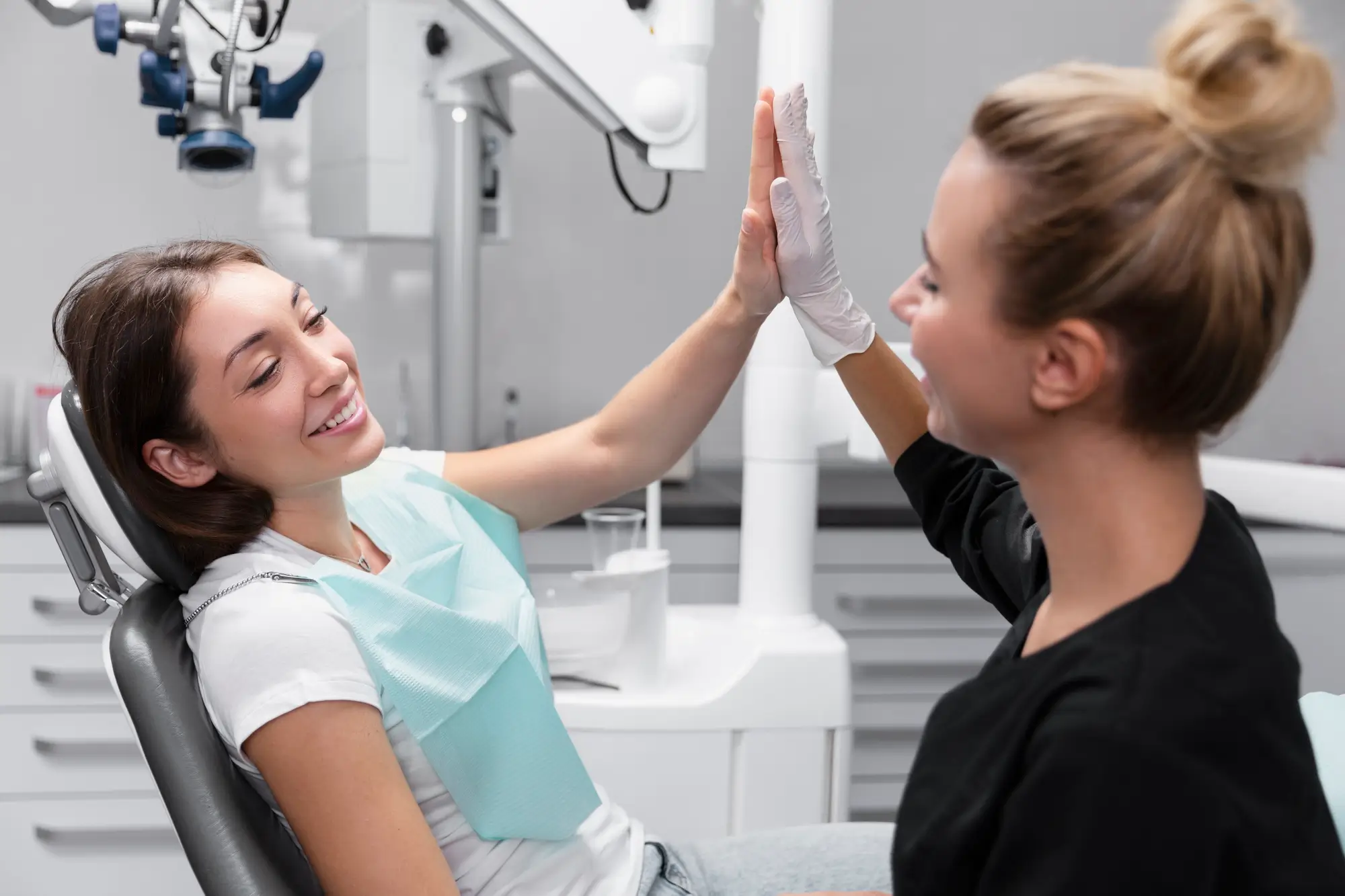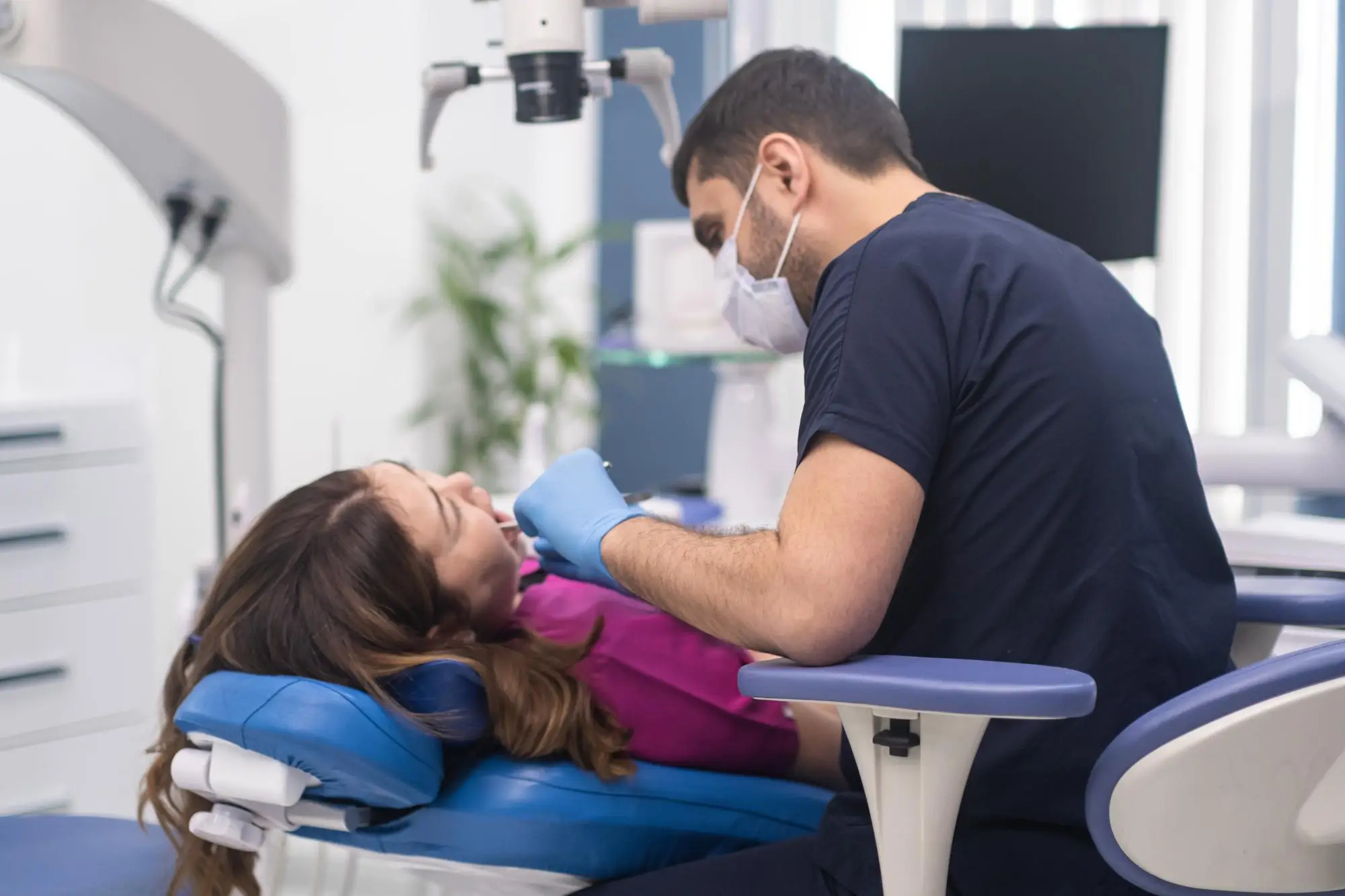In this article, we will introduce biomimetic materials in dentistry (Nano-hybrid composite resins, Ceramic biomaterials and Bioactive dental materials), their characteristics and a comprehensive comparison of these materials.
Introduction to Biomimetic Dentistry
Biomimetic dentistry services represents a revolutionary approach to restorative and preventive dental care, aiming to emulate the natural biomechanical and aesthetic properties of teeth. This section provides a comprehensive introduction to biomimetic dentistry, exploring its principles, goals, and significant advancements in dental materials and techniques.
Principles of Biomimetic Dentistry
Biomimetic dentistry is founded on the principle of preserving as much natural tooth structure as possible while restoring teeth to their original strength, function, and aesthetics. Unlike traditional restorative methods that often require extensive tooth preparation, biomimetic techniques prioritize minimally invasive procedures. By utilizing advanced bonding technologies and biomimetic materials, dentists aim to simulate natural teeth’s mechanical properties and enhance long-term oral health outcomes.
Goals of Dental Biomimetic
The primary goals of this kind of dentistry include:
- Preserving Natural Tooth Structure: Biomimetic techniques focus on conservative treatments that preserve healthy tooth structure. This approach reduces the need for aggressive tooth preparation and promotes tooth longevity.
- Minimizing Invasive Procedures: By utilizing adhesive bonding and biomaterials, biomimetic dentistry minimizes the removal of healthy tooth structure. This preserves dental pulp vitality and reduces the risk of future complications.
- Enhancing Aesthetics: Materials in Biomimetic dentistry are designed to closely mimic the natural appearance and color of teeth, providing seamless integration with surrounding dentition. This aesthetic enhancement improves patient satisfaction and confidence in their smile.
- Promoting Longevity: Biomimetic restorations aim to replicate natural tooth function and durability. Advanced materials and techniques contribute to restoration longevity and reduce the likelihood of restoration failure over time.
Applications in Modern Dentistry
Biomimetic dentistry has revolutionized various aspects of dental practice, including:
- Composite Bonding: Utilizing high-strength composite resins and adhesive bonding techniques to repair small to moderate cavities and fractures while preserving tooth structure.
- Inlays and Onlays: Biomimetic materials such as ceramic and composite resin onlays are used to restore large cavities or damaged tooth surfaces. These restorations provide durable and aesthetic outcomes without compromising tooth integrity. (Biomimetic Techniques in Dental Inlays)
Read it: Biomimetic Applications in Dental Onlays
- Endodontic Treatments: Biomimetic principles are applied in root canal therapies to conserve tooth structure and restore tooth function effectively. This includes using biocompatible materials for root canal filling and sealants.
- Preventive Care: Biomimetic dentistry emphasizes preventive strategies such as sealants and remineralization techniques to strengthen enamel and prevent decay progression. These interventions help maintain oral health and reduce the need for invasive treatments.
Advancements in Biomimetic Materials
Recent advancements in materials in biomimetic dentistry have significantly enhanced treatment outcomes and patient satisfaction. These materials include:
- Nano-hybrid Composites: Nano-hybrid composite resins offer improved wear resistance, color stability, and bonding strength compared to traditional materials. They provide excellent aesthetic results and long-term durability in restorations.
- Bioactive Materials: Bioactive dental materials release fluoride and calcium ions to promote remineralization and strengthen natural tooth structure. These materials enhance the protective properties of dental restorations and support overall oral health.
- CAD/CAM Technology: Computer-aided design and manufacturing (CAD/CAM) systems enable the precise fabrication of biomimetic restorations from high-quality materials. CAD/CAM technology ensures optimal fit, function, and aesthetics in dental treatments.
In conclusion, biomimetic dentistry represents a transformative approach to modern dental care, emphasizing conservative treatments, natural aesthetics, and long-term oral health. By integrating advanced materials and techniques, dentists at Fortune Smiles Dental Care strive to deliver superior biomimetic restorations tailored to each patient’s unique needs and preferences.

Biomimetic Dental Materials: Characteristics and Benefits
Biomimetic dental materials are designed to mimic the natural structure and function of teeth while providing optimal strength, durability, and aesthetics. This section delves into the characteristics and significant benefits of biomimetic materials commonly used in restorative and preventive dental procedures.
Characteristics of Biomimetic Dental Materials
- Natural Appearance: Biomimetic materials, such as nano-hybrid composites and ceramic compounds, are formulated to replicate the natural color, translucency, and texture of tooth enamel. This aesthetic resemblance ensures seamless integration with surrounding dentition, enhancing smile aesthetics and patient satisfaction.
- Biocompatibility: Biomimetic materials are biocompatible and well-tolerated by oral tissues, minimizing the risk of allergic reactions or adverse tissue responses. These materials promote healthy gum tissue integration and support long-term oral health outcomes.
- Mechanical Properties: Biomimetic dental materials exhibit superior mechanical properties, including high compressive strength, wear resistance, and durability. These materials are capable of withstanding chewing forces and maintaining restoration integrity over extended periods.
- Adhesive Bonding: Advanced adhesive bonding technologies enable biomimetic materials to bond directly to tooth structure, creating strong and durable restorations. This bonding mechanism reduces the need for extensive tooth preparation and preserves more natural tooth structure.
- Versatility: Biomimetic materials offer versatility in clinical applications, ranging from conservative composite fillings to complex ceramic onlays and biomimetic application in crowns. These materials can be customized to meet specific treatment goals and patient preferences.
Read it: Application of Biomimetics in Teeth Whitening
Benefits of Biomimetic Dental Materials
- Conservative Treatment Approach: Biomimetic materials facilitate minimally invasive treatment strategies that preserve maximum natural tooth structure. This approach reduces the risk of pulp exposure and minimizes post-operative sensitivity.
- Enhanced Aesthetics: The natural appearance and color stability of biomimetic materials enhance smile aesthetics and seamlessly blend with natural dentition. Patients benefit from aesthetically pleasing restorations that restore dental function and confidence.
- Long-term Durability: Biomimetic materials are engineered for longevity and resistance to wear, fracture, and staining. These materials provide durable solutions for restoring damaged or decayed teeth while maintaining functional integrity.
- Biological Integration: Biomimetic materials support biological tooth structure by promoting remineralization and preserving dental pulp vitality. These materials contribute to overall oral health by enhancing the protective properties of dental restorations.
- Patient Satisfaction: By prioritizing aesthetic results, functional performance, and patient comfort, biomimetic materials contribute to high levels of patient satisfaction and positive treatment outcomes. Patients appreciate the natural look and feel of biomimetic restorations.
Clinical Applications of Biomimetic Dental Materials
- Composite Resins: Nano-hybrid composite resins are widely used for direct composite fillings and small to moderate cavities. These materials offer excellent handling properties, color matching capabilities, and durability in restorative procedures.
- Ceramic Compounds: Advanced ceramic materials, such as zirconia and lithium disilicate, are utilized for indirect restorations like inlays, onlays, and crowns. These materials provide superior strength, biocompatibility, and aesthetic outcomes in complex dental treatments.
- Bioactive Materials: Bioactive dental materials release ions to stimulate remineralization and strengthen natural tooth structure. These materials support preventive care strategies and enhance the longevity of biomimetic restorations.
In summary, biomimetic dental materials represent a paradigm shift in modern dentistry, combining advanced technology with biological principles to achieve superior clinical outcomes. At Fortune Smiles Dental Care, we leverage these materials to deliver personalized and high-quality dental care that prioritizes patient health, aesthetics, and long-term oral function. You can contact us for consulting and biomimetic dentistry in california.

Comparison of Biomimetic Materials in Dentistry
Biomimetic dentistry relies on a range of advanced materials designed to replicate the natural properties of teeth while offering superior clinical performance and aesthetic outcomes. This section provides a comprehensive comparison of biomimetic dental materials, highlighting their unique characteristics, benefits, and clinical applications.
Nano-Hybrid Composite Resins
Nano-hybrid composite resins represent a significant advancement in restorative dentistry, combining nano-particles with traditional composite materials to enhance strength, wear resistance, and aesthetics. These materials are widely used for direct restorations such as fillings and small to medium-sized cavities. Key advantages include:
- Aesthetic Properties: Nano-hybrid composites exhibit excellent color stability and translucency, closely mimicking natural tooth enamel. This ensures seamless integration with surrounding dentition and enhances smile aesthetics.
- Mechanical Strength: Enhanced filler technology improves the compressive strength and wear resistance of nano-hybrid composites, making them suitable for restoring load-bearing surfaces in posterior teeth.
- Versatility: Nano-hybrid composite resins offer versatility in shade matching and contouring, allowing dentists to achieve precise anatomical contours and natural-looking restorations.
Ceramic Biomaterials
Ceramic biomaterials, such as zirconia and lithium disilicate, are renowned for their exceptional strength, durability, and biocompatibility. These materials are utilized for indirect restorations including inlays, onlays, veneers, and crowns. Key characteristics include:
- High Strength: Zirconia and lithium disilicate ceramics exhibit high flexural strength and fracture resistance, making them suitable for restoring heavily compromised teeth and areas subjected to high occlusal forces.
- Aesthetic Excellence: Ceramic biomaterials offer superior translucency and natural coloration, providing lifelike restorations that blend seamlessly with natural teeth. This aesthetic quality is particularly beneficial for anterior restorations.
- Biocompatibility: Ceramic materials are biologically inert and well-tolerated by oral tissues, minimizing the risk of allergic reactions or adverse tissue responses. This promotes long-term oral health and restoration longevity.
Bioactive Dental Materials
Bioactive dental materials are designed to interact with the natural tooth structure by releasing ions that promote remineralization and strengthen enamel. These materials enhance the protective properties of dental restorations and support preventive care strategies. Key benefits include:
- Remineralization: Bioactive materials release calcium and phosphate ions, stimulating natural remineralization processes within the tooth structure. This helps to maintain enamel integrity and reduce the risk of secondary decay.
- Longevity: By supporting tooth remineralization, bioactive materials contribute to the longevity and durability of dental restorations. They minimize the need for invasive treatments and preserve natural tooth structure over time.
- Preventive Care: Bioactive materials are utilized in sealants, liners, and filling materials to provide an additional layer of protection against bacterial infiltration and acid erosion. These preventive measures enhance overall oral health and reduce treatment complexity.
Clinical Considerations and Applications
- Treatment Planning: The selection of biomimetic materials is guided by factors such as the location of the restoration, functional requirements, patient preferences, and aesthetic considerations. Dentists at Fortune Smiles Dental Care assess each case individually to determine the most suitable material for optimal treatment outcomes.
- Aesthetic Demands: For patients seeking highly aesthetic outcomes, ceramic biomaterials are preferred for their ability to replicate natural tooth appearance and translucency. Nano-hybrid composites offer a balance between aesthetics and durability for posterior restorations.
- Long-Term Durability: Ceramic biomaterials provide superior long-term durability and resistance to wear compared to composite resins. They are particularly indicated for restoring teeth subjected to heavy occlusal forces and functional demands.
In conclusion, the choice of biomimetic dental materials plays a crucial role in achieving successful restorative outcomes that prioritize both function and aesthetics. By leveraging advanced materials and techniques, dentists at Fortune Smiles Dental Care deliver personalized care that enhances patient satisfaction and promotes long-term oral health.
- Patient-Centered Care: At Fortune Smiles Dental Care, we emphasize personalized treatment plans tailored to each patient’s unique needs and preferences. Our dentists utilize biomimetic techniques to preserve natural tooth structure and enhance overall oral health.
- Advanced Technology: We leverage state-of-the-art technologies, including digital imaging, CAD/CAM systems, and intraoral scanners, to accurately diagnose dental conditions and fabricate precise biomimetic restorations. This technology ensures optimal fit, function, and aesthetics in every treatment.
- Material Selection: Our dental team carefully selects biomimetic materials based on clinical indications, patient expectations, and treatment goals. We offer a range of options, including nano-hybrid composites and advanced ceramic biomaterials, to address varying dental needs effectively.
- Minimally Invasive Techniques: Biomimetic dentistry at Fortune Smiles Dental Care focuses on minimally invasive techniques that preserve natural tooth structure and promote tissue conservation. This approach minimizes patient discomfort and accelerates recovery times.
Patient Education and Engagement
- Comprehensive Consultations: We prioritize patient education during initial consultations, discussing the benefits of biomimetic dentistry and explaining treatment options in detail. Our goal is to empower patients to make informed decisions about their oral health.
- Transparent Communication: Open communication is fundamental to our practice philosophy. We ensure that patients understand the rationale behind recommended treatments, potential outcomes, and long-term benefits of biomimetic restorations.
- Post-Treatment Care: Following biomimetic treatments, we provide thorough post-operative instructions and regular follow-up appointments to monitor restoration performance and maintain oral health. Patient satisfaction and treatment success are our top priorities.
Community and Professional Commitment
- Continuing Education: Our dental team participates in ongoing education and training programs to stay abreast of the latest advancements in biomimetic dentistry. We are committed to enhancing clinical skills and delivering exceptional care to our patients.
- Community Outreach: Fortune Smiles Dental Care is actively involved in community outreach initiatives, promoting oral health education and providing dental care resources to underserved populations. We strive to make a positive impact on oral health within our community.
Final thoughts about materials in biomimetic dentistry
At Fortune Smiles Dental Care, biomimetic dentistry represents a cornerstone of our commitment to excellence in dental care. By embracing innovative techniques and high-quality biomimetic materials, we ensure that our patients receive the highest standard of treatment while preserving their natural smiles and enhancing overall oral health.

